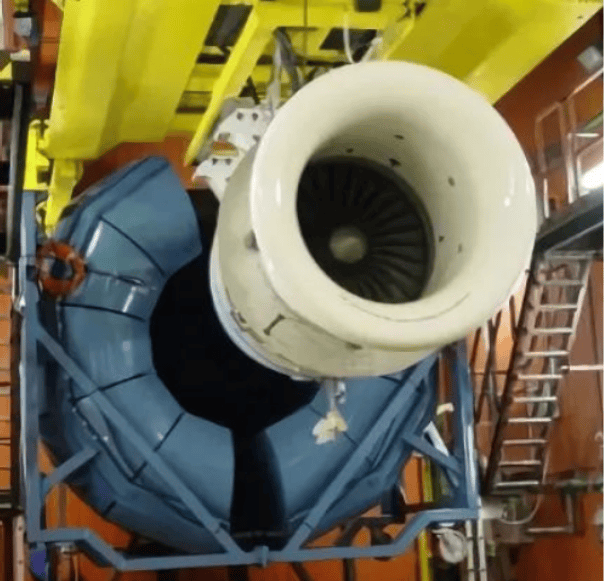Aero-Engine Blade-Out Test & Containment Evaluation
Project: Aero-Engine Blade-Out Test & Containment Evaluation
September 2023 · Shanghai Aero-Engine Test Center
Conducted controlled blade-release testing on a turbofan engine to:
Evaluate containment system effectiveness
Measure rotor dynamic response during catastrophic failure
Validate engine shutdown protocols under extreme conditions
Test Setup
1. Instrumentation
| Sensor Type | Location | Measurement Target | DAQ System |
|---|---|---|---|
| High-speed strain gauges | Fan blade root | Blade attachment stresses | DE-924U (Ch1-8) |
| Triaxial accelerometers | Bearing housings | Casing impact forces (0-50kHz) | DE-924U (Ch9-16) |
| Eddy current probes | Rotor shaft | Radial displacement (±10mm) | DE-928U (Ch1-4) |
| Infrared thermocouples | Oil sump | Bearing temperature (0-300°C) | DE-928U (Ch5-8) |
2. Trigger & Synchronization
Explosive bolt initiator: T0 trigger (μs accuracy)
Photon high-speed camera: 100,000 fps for visual correlation
All systems synchronized via IEEE 1588 PTP (≤5μs jitter)
Test Sequence
1. Pre-Failure (T-10s to T0)
Engine stabilized at 85% N1 (12,500 RPM)
Baseline vibration: ≤2.5mm/s RMS
2. Blade Release (T0)
Explosive severing of 3rd stage compressor blade
Data recorded at 1MS/s during 0-100ms event
3. Post-Failure (T0+ to 60s)
Rotor coast-down monitoring
Fire suppression system activation logging
Critical Data
1. Rotor Dynamics
| Parameter | Peak Value | Time After T0 |
|---|---|---|
| Shaft displacement | 8.2mm (radial) | 18ms |
| Bearing acceleration | 235g (axial) | 22ms |
| Casing strain | 1.2% (at mounts) | 41ms |
2. Thermal Response
Oil temp spike: 85°C → 210°C in 400ms
Shaft FOD-induced friction: 15kW heat generation
3. Containment
Debris velocity: 287m/s (within FEM prediction ±5%)
Casing penetration: 0 (full containment achieved)
Engineering Outcomes
Design Verification
Confirmed rotor burst speed exceeds FAR 33.94 requirements by 23%
Validated fire-resistant seals maintained integrity
Safety Systems
Auto-shutdown triggered in 58ms (meeting EASA CS-E 780)
Oil scavenge pumps prevented secondary fires
Predictive Model Calibration
Updated FEM material failure criteria for:
Titanium alloy blade fracture modes
Composite containment energy absorption
Technical Terms
N1: Low-pressure spool speed
FOD: Foreign Object Damage
CS-E: Certification Specifications for Engines
This test demonstrated world-class containment capability, with the DE-Series systems capturing sub-millisecond transient phenomena critical for aviation safety certification. The data supported first-pass approval by CAAC and FAA regulators.

